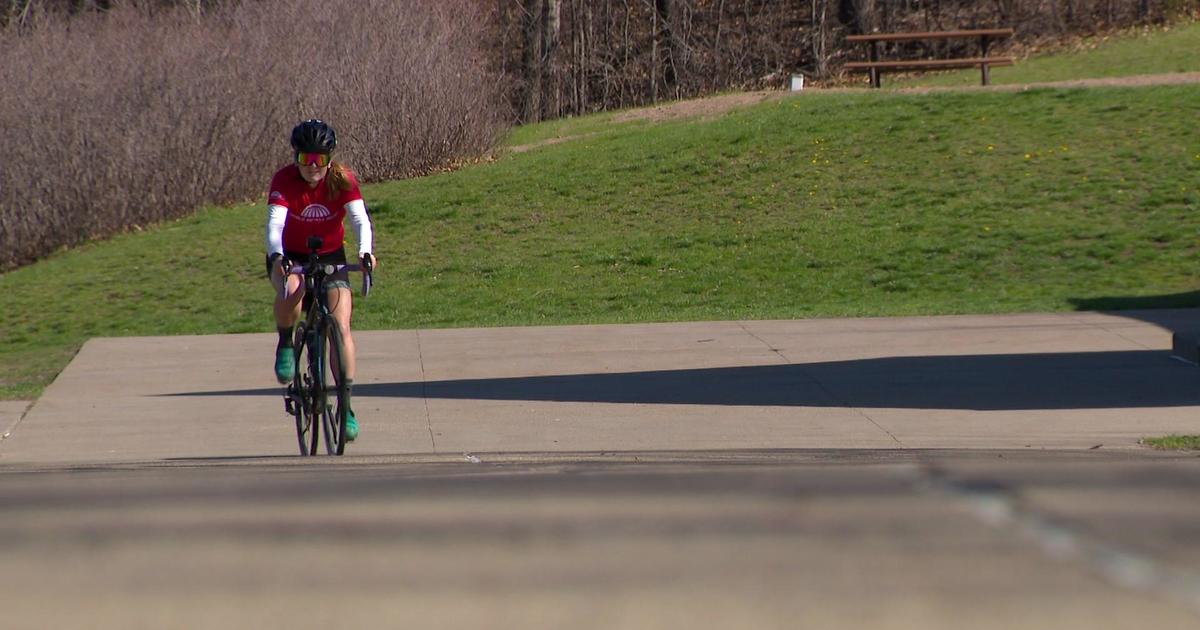Eyes On High Water In Fargo-Moorhead
FARGO, N.D. (AP) -- While emergency workers in boats and all-terrain vehicles went door-to-door Tuesday in rural areas north of Fargo to check on residents isolated by flooding, the Rev. Emily Nesdahl made dozens of telephone calls ministering to stranded congregation members worn out from three straight years of high water.
"There's a lot of weariness, lots of 24-hour sump pump watching," said Nesdahl, pastor of rural Harwood's Maple Sheyenne Lutheran Church, named for the Maple and Sheyenne rivers that are among the region's flood culprits.
Still, she said, her congregation of about 350 was "gracious and doing as well as they can" fighting rising water at their homes.
The church itself is located on high ground and is in no danger of being threatened by high water, but roads leading to it have been swamped. Flooding caused the church to shutter for weeks in 2009 and 2010. This year the church has been shut for several days and likely will remain that way for several weeks.
"This is the third year in a row," Nesdahl said. "It's a pain but we're becoming old hats at this."
Cass County Administrator Bonnie Johnson said sheriff's deputies and federal authorities were checking on residents throughout the county on Tuesday. Authorities were focusing most of the attention on areas of the highest water, a few miles northwest of Fargo, where the Red River crested over the weekend at 38.75 feet, the fourth-highest flood on record.
"We're performing welfare checks and providing supplies as needed," she said.
Because of fear the boats' wakes would damage temporary dikes, they were being used for checks only if no other mode was possible, Johnson said.
Authorities got one call Tuesday from an Argusville woman who was stranded at her home by floodwaters and needed diapers and formula for her 3-month-old baby. Deputies took the baby supplies to the woman, but U.S. Coast Guard personnel in a rescue helicopter later moved her and her child from their home to safety, Johnson said.
A handful of officials from the county sheriff's office, Coast Guard and U.S. Fish and Wildlife had planned put air boats into water at the Maple River dam to check out erosion. But that effort was scrapped when it was discovered the structure was "functioning as designed," Cass County Sheriff's Deputy Steve Sprecher said.
"With the waves from the boats and with the water this high, we don't need to jeopardize the integrity of the dike or jeopardize the safety of the operators," Sprecher said.
The most challenging aspect was getting to the dam because of washed-out roads.
"We wound up going probably 20 miles out of our way to get to the spot we needed to get to," Sprecher said.
Rivers overflowing their banks is a normal event most springs, but the Red River Valley's extremely flat topography also makes it prone to overland flooding in any year. Several tributaries that are in Cass County often back up when the Red is full, so the water backs up mostly into farm fields.
North Dakota State University researchers have found that overland flooding is a nuisance for farmers, but has little effect on the quality of soil, said Dave Franzen, a soil science specialist at the Fargo college. It can hurt production by delaying planting, he said.
The flood threat this year was fueled by a wet fall and heavy winter snowfall that was among the highest in recent years. National Weather Service officials said the timing of streams being at or near record crests at the same time contributed to the unprecedented overland flooding.
North Dakota Gov. Jack Dalrymple said Monday that flooding in the Argusville and nearby Harwood was probably the worst in history. More than 30 miles of Interstate 29 remained closed Tuesday from north of Fargo to Hillsboro. Roads in the region that have never been flooded before are swamped now, state Transportation Department officials said.
The largest city downstream of Fargo, Grand Forks, was devastated by flooding in 1997. But residents have been protected ever since by a $410 million flood protection system and were expected to have no problems this year from an expected 52-foot crest Friday.
But the water was testing some towns on the Minnesota side of the Red.
Levees that protect Hendrum, Minn., were raised 2 feet this week to protect against the rising Wild Rice and Red rivers, The U.S. Army Corps of Engineers said. Similar levee work was done at the Minnesota cities of Halstad and Perley.
"I'm confident we're safe now," Mayor Curt Johannsen said of Hendrum, a town of 310 people about 30 miles north of Fargo and Moorhead, Minn. "It's just a matter of where we will eventually top out."
Classes at the city's school have been called off in town because of flooding on U.S. Highway 75 and other roads near the city, Johannsen said. About two dozen Minnesota National Guard soldiers, who are in town to patrol dikes and direct traffic, are sleeping at the school's gymnasium, the mayor said.
(© Copyright 2011 The Associated Press. All Rights Reserved. This material may not be published, broadcast, rewritten or redistributed.)


